Are you wondering what backyard red birds have you spotted in Texas? Or curious as to what red birds Texas has to offer? Texas is known as a magnificent place for bird watching and the state is home to many red-coloured birds.
In this list, we discuss the various attributions of these birds to help you identify between them.
Whilst some of these birds are redder than others, they are all magnificently vibrant and truly a sight to see in the area.
From Cardinals to Flycatchers, there are various species that make up the red birds found in Texas. So, the next time you’re in the area, keep an eye out in case you catch any flash of red.
1. Northern Cardinal
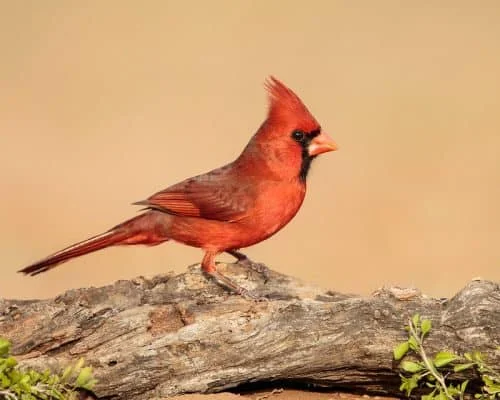
Referred to as the redbird, the Cardinal is indeed one of the most spectacular red birds that can be found in Texas. Members of the genus Cardinalis, these birds are able-bodied songbirds, armed with brilliant bright red feathers that can be seen a great distance away.
Male Cardinals are typically larger and redder than females, who are likely to appear a yellow-brown colour instead. Adult males also have a distinguishable black face mask that extend across the eyes and down towards the chest, contrasting deeply with their vibrant red bodies
These birds are found in Texas as well as across much of the eastern United States and further South towards Central America.
The Cardinal is a widely renowned bird that is in fact the state bird of seven states in America.
They can be attributed to habitats like woodlands and wetlands, and also gardens where they regularly visit seed feeders. Their diet primarily consists of a variety of seeds, and also some small insects.
To learn more about Northern Cardinal you can visit: https://www.audubon.org/field-guide/bird/northern-cardinal
2. American Robin
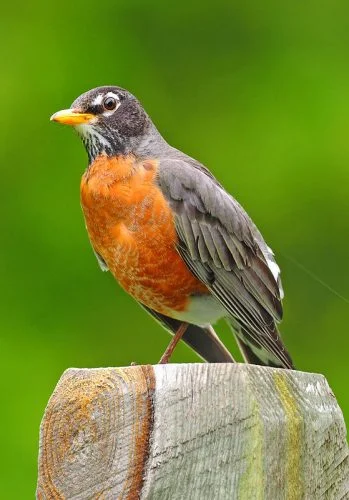
American Robins are renowned for their prominent red breasts. Whilst these birds may not be entirely red, they are deserving of a place in this list as their bellies are a vibrant display of rouge colour that is frequently seen in and around Texas.
These are large species of thrush, with rich red plumages and brown upperparts, with some white detailing on the lower belly. During mating season, males grow black feathers across their heads to attract the females.
The red plumages of these robins are largely seen across Texas, as well as other parts of the United States. These birds are also frequently found in nearby states such as Florida and South Carolina.
They are very much creatures of residential areas – often seen in towns, gardens and agricultural lands. Often, they may visit feeders, and are seen hopping along the ground whilst foraging.
To learn more about American Robin you can visit: https://www.audubon.org/field-guide/bird/american-robin
3. Red-headed Woodpecker
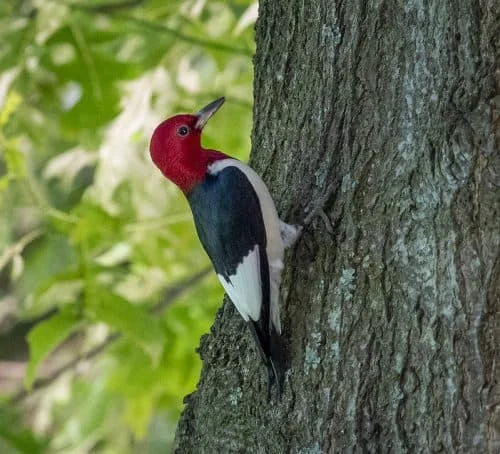
Red-headed Woodpeckers are frequent visitors of Texas. Whilst they are not red in their entirety, these birds have brilliant red heads that are indeed eye-catching. They are in fact the only woodpeckers in eastern United States with a head that is completely red.
The rest of their bodies are a dark brown, sometimes black colour, often with some dark red tones on the breast too. Their wings are a distinctive pattern of black and white patches, which contrast greatly with their red heads.
Winter seasons may be the best time to spot these woodpeckers in regions such as Texas and Florida, but they do breed in these regions too. One may spot these birds amongst trees in open habitats of forests, deserts and sometimes urban areas too.
They typically forage for insects and are known to be relatively easy to spot.
To learn more about Red-headed Woodpecker you can visit: https://www.audubon.org/field-guide/bird/red-headed-woodpecker
4. Pyrrhuloxia
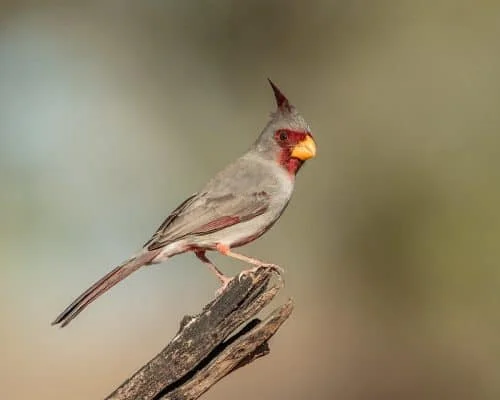
These finches are large and similar in size and appearance to the average cardinal; they are commonly larger than most other birds in this list.
They have reddened faces that extend down towards their breasts, but much of the rest of their upper body is a pale grey colour with some rosy tones braided in the feathers.
Their wings are a distinctive dark grey colour with stark, red edges and their tails are bright red. In addition to the magnificent red display, you can identify this species relatively easily by their thick, contrasting yellow bills.
Perhaps appropriately nicknamed the ‘Desert Cardinal’, these birds are found in warm, dry states such as Arizona, New Mexico and Texas, most commonly in desert brushes and thickets.
They forage for insects, seeds and berries, usually along stream beds and are likely to be spotted on the ground.
To learn more about Pyrrhuloxia you can visit: https://www.audubon.org/field-guide/bird/pyrrhuloxia
5. House Finch
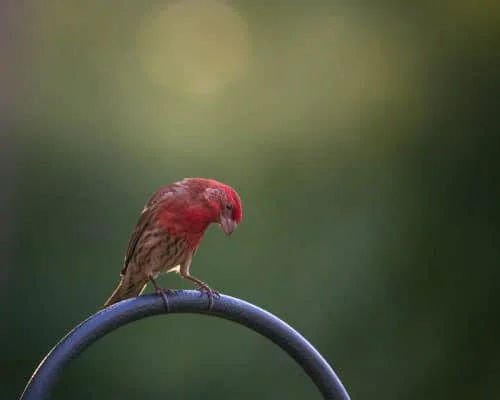
House Finches are social birds likely to be seen across much of Texas. They are small finches with a colour display that, whilst not being as brightly red as other birds in this list, is still magnificent in its own right.
These birds have rouge breasts and faces, that fade into a brown streaking along their backs and tails.
They also have short wings with some black detailing as well as distinctive flat heads. It is likely that females do not show any red colouring in their feathers, therefore red House Finches found in Texas are almost always male.
As well as in Texas, these birds are native of most of the United States – and a sighting of one is very common.
They are frequent visitors of parks, farms and residential areas, as well as deserts, grasslands and forests.
You may spot them at feeders, where they most frequently search for food. Otherwise, they feed and hop along on the ground, or perch in tall trees.
To learn more about House Finch can visit: https://www.audubon.org/field-guide/bird/house-finch
6. Summer Tanager
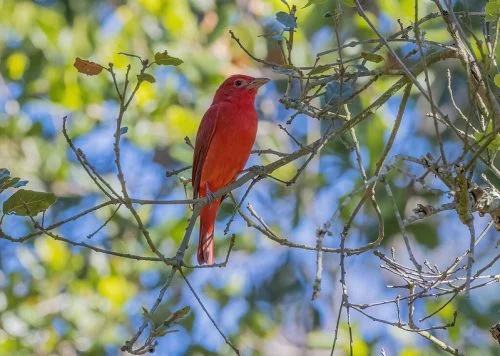
These vibrant birds are considered members of the cardinal family, Cardinalidae, despite being referred to as tanagers. They are indeed about the size of a typical cardinal and look and sound similar to other members within the cardinal family.
Their song is similar to that of an American Robin and is often heard from high treetops, which is typically where Summer Tanagers would forage.
These birds generally have vibrant red feathers across the entirety of their bodies, and faint yellow bills.
If you spot a red Summer Tanager, is it likely to be adult male as females and immature males are usually bright green and sometimes yellow on their upperparts (with only some red tones appearing across the feathers).
These birds are most likely to forage out of sight, often hidden in high trees and in dense forests. You may catch sight of one, however, as they fly out to catch and eat insects and even sometimes at bird feeders stocked with seeds.
As well as feeders, planting some trees in your yard may also attract Summer Tanagers, such as the Cymbopetalum Mayanum tree. They are likely to consume the fruit from these trees, as well as eat bees and wasps (that are usually caught in flight).
To learn more about Summer Tanager you can visit: https://www.audubon.org/field-guide/bird/summer-tanager
7. Vermilion Flycatcher
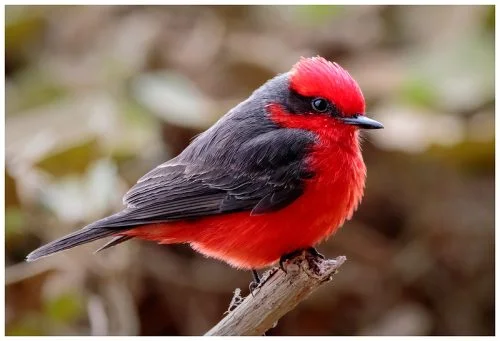
These flycatchers are truly striking creatures. Vermillon Flycatchers are a stunning bright red colour – making them indeed the most colourful flycatchers in the United States.
They have an unmistakable rouged upper body, with some brownish detailing on their wings and thick brown eyelines that extend down their necks and backs.
Their heads are vibrant, and their reddened bodies even appear almost fluorescent in harsh sunlight, which is truly a remarkable sight to see. They are truly incredible birds that are indeed a sight to see.
Some Vermillion Flycatchers that may appear duller or less vibrant in colour are likely to be females or juveniles.
These birds are seen across much of North, Central and South America – namely along the western coast of the United States, and further south through Texas and into regions of South America. Their preferred habitats usually include streams and lakes with woodlands and forests nearby, mostly in dry and open areas with shrubs.
As their diets consists mainly of insects, these birds are likely to be found on fence lines, branches and other exposed perches watching flying insects. They forage their food by catching it mid-flight, and are renowned for their quick, sharp attack.
To learn more about Vermillion Flycatcher you can visit: https://www.audubon.org/field-guide/bird/vermilion-flycatcher
8. Painted Bunting
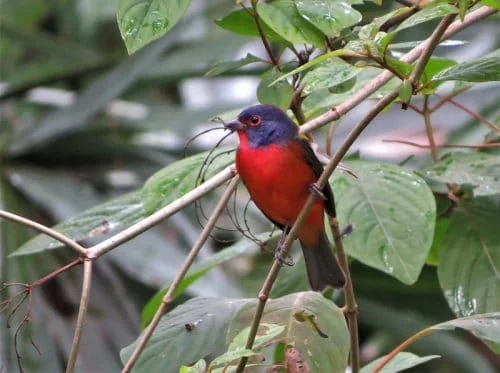
Nicknamed the most beautiful bird in North America, Painted Buntings are without a doubt a delight to spot. They are members of the cardinal family, Cardinalidae, and can be spotted fairly commonly across much of the United States.
Perhaps they are not as vibrantly red as others in this list, but their roughed plumages and underparts are distinctive and complex in colour – which in fact makes them the easiest bird in this list to identify.
Females, however, are likely to be a camouflaging dark green and yellow to help them remain hidden from predators.
They sing very short, sweet songs in breeding season, most commonly to establish their territory.
Typically, breeding season is a good time to spot these birds in states such as Louisiana and Texas, whereas winter season sees them travelling further south towards Florida and Cuba in search of warmer climates and tropical forests.
These birds are, however, rather secretive and tend to hide among tall and dense trees.
For this reason, they are most likely to be spotted in the mornings when they sing from exposed branches, or sometimes near bird feeders near residential areas that are stocked with a variation of seeds. These birds also tend to hop along the ground in search for grass seeds and other small insects to eat.
To learn more about Painted Bunting you can visit: https://www.audubon.org/field-guide/bird/painted-bunting
